Mike Richardson shared an image of aerifying half a green at a time. The purpose of this, the superintendent said, was to always have a good surface for the hole.
Interesting presentation by a Thai superintendent. Only aerifies half of each green at a time so there is always good surface for hole. Anyone else doing this?? pic.twitter.com/eRpSALSgbP
— Mike Richardson (@ArkansasTurf) March 12, 2019
The comments, and I paraphrase here, ranged from “what a ridiculous and counterproductive way to do it” to “that’s a great idea and the golfers love it.”
When I was talking with Mike after the conference, we discussed that technique, and I was reminded of some other things I’ve seen related to golf course maintenance. Specifically, things done to try to improve the customer experience, and at the same time to maximize revenue. This generally involves keeping the golf course open.
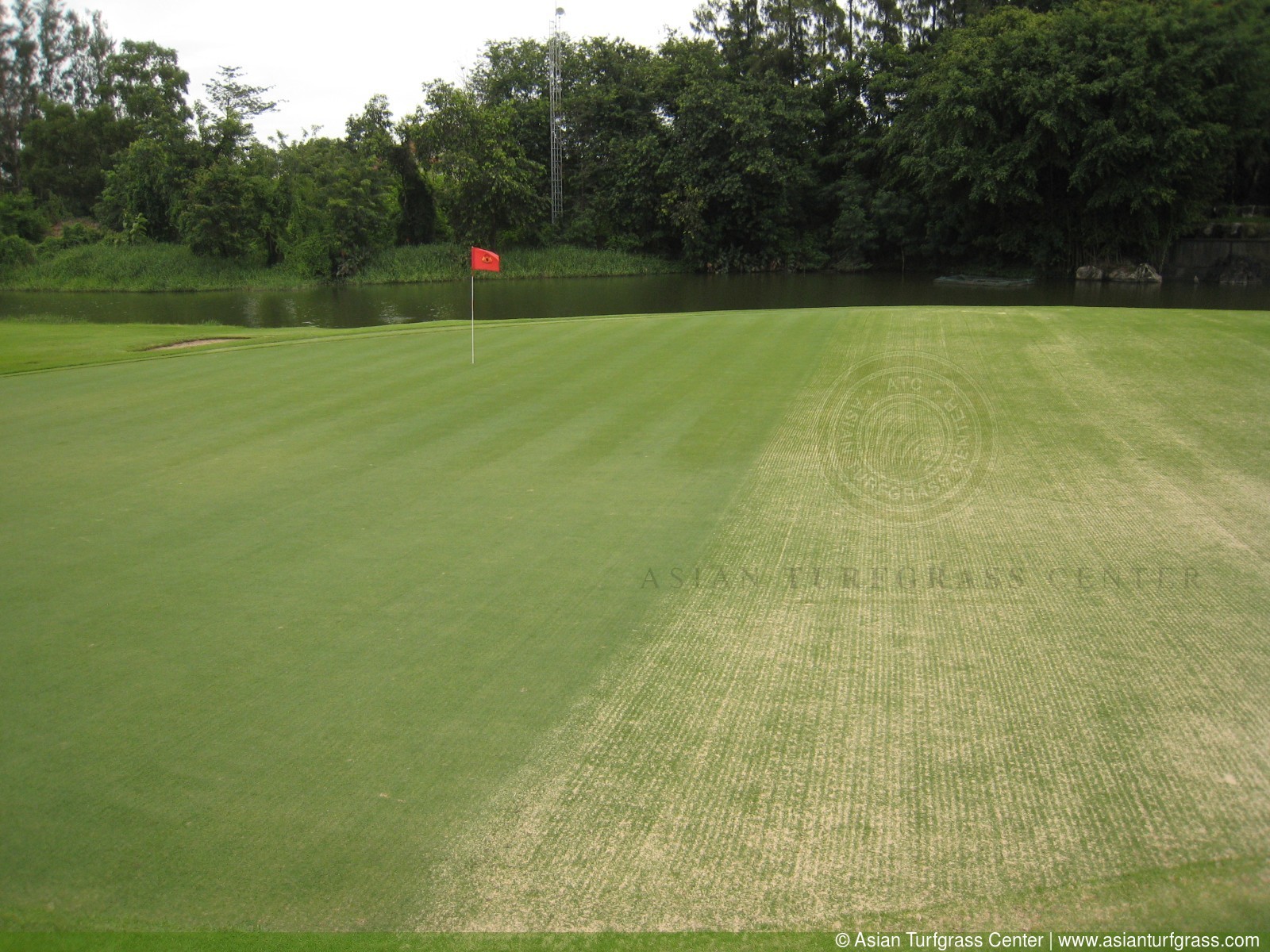 Tifeagle green in Bangkok, half of it recently scarified, half already recovered from scarification
Tifeagle green in Bangkok, half of it recently scarified, half already recovered from scarification
The scarification of half a green at a time is similar to the practice of aerifiying half the green. In this way, the hole can always be placed on an undisturbed section of the green.
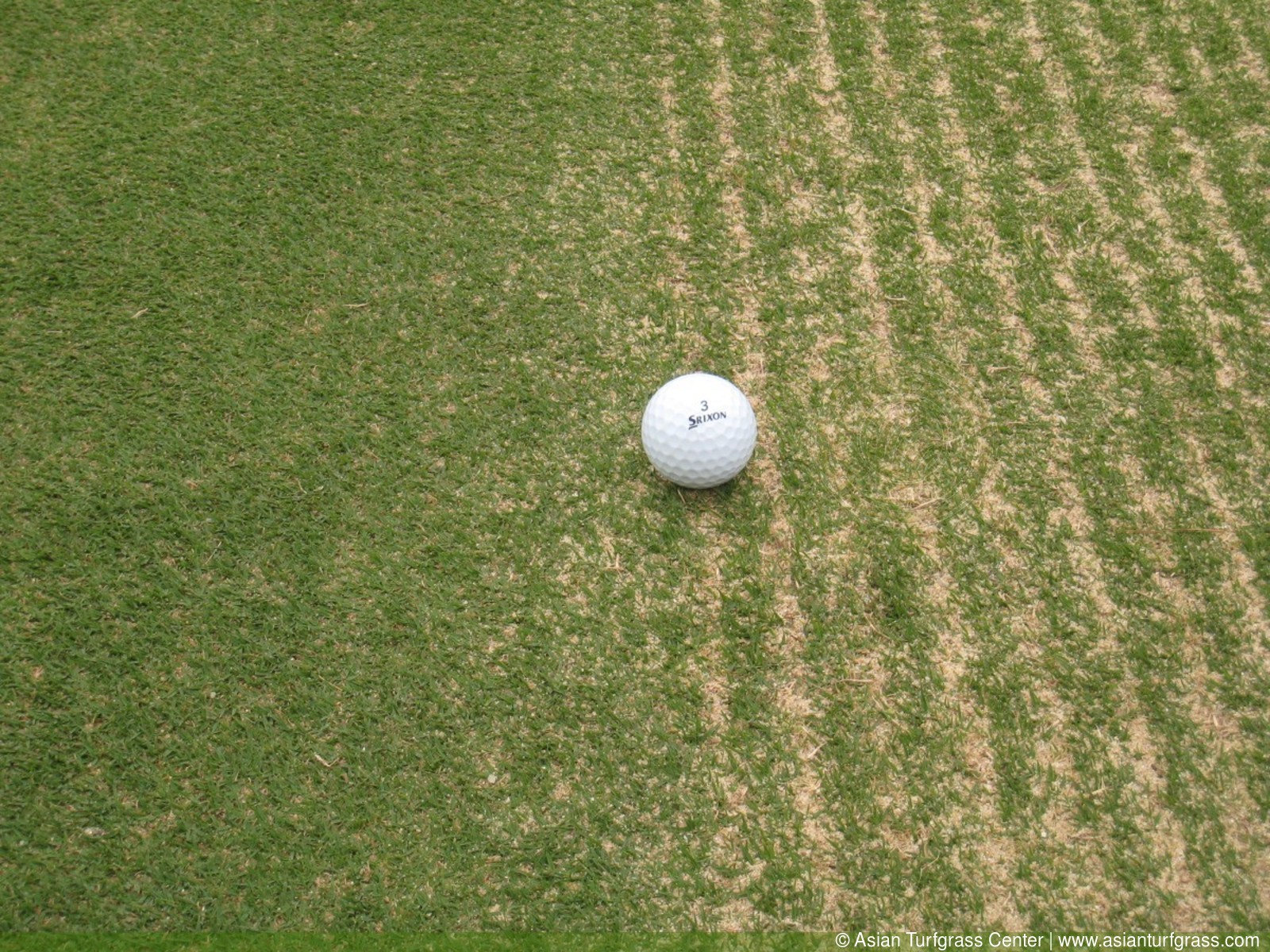 Ball at the dividing point between recovered (left) and scarified (right) surface on a Tifeagle green in Bangkok
Ball at the dividing point between recovered (left) and scarified (right) surface on a Tifeagle green in Bangkok
Moving to the fairways, one could do the same thing with practices such as scarifying or aerifying.
Or one could do even more intensive work while keeping the course open. At Panya Indra Golf Club in Bangkok, the fairways were converted from bermudagrass to seashore paspalum without closing the course. The maintenance staff established paspalum nurseries, then resodded half a fairway at a time.
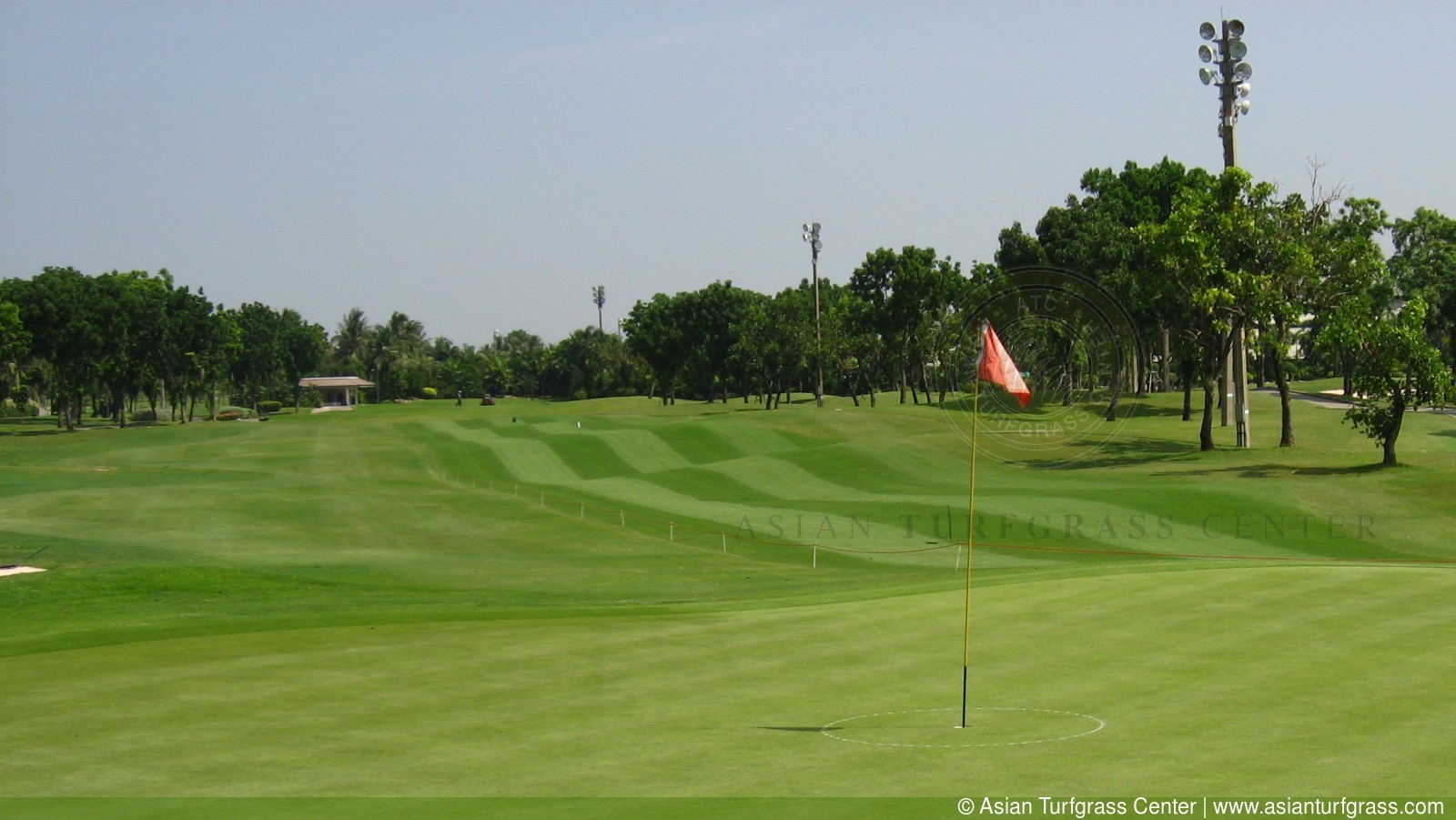 The fairway is being converted from bermudagrass to seashore paspalum
The fairway is being converted from bermudagrass to seashore paspalum
The side of the fairway being converted to seashore paspalum was designated ground under repair. Play continued on the bermudagrass side.
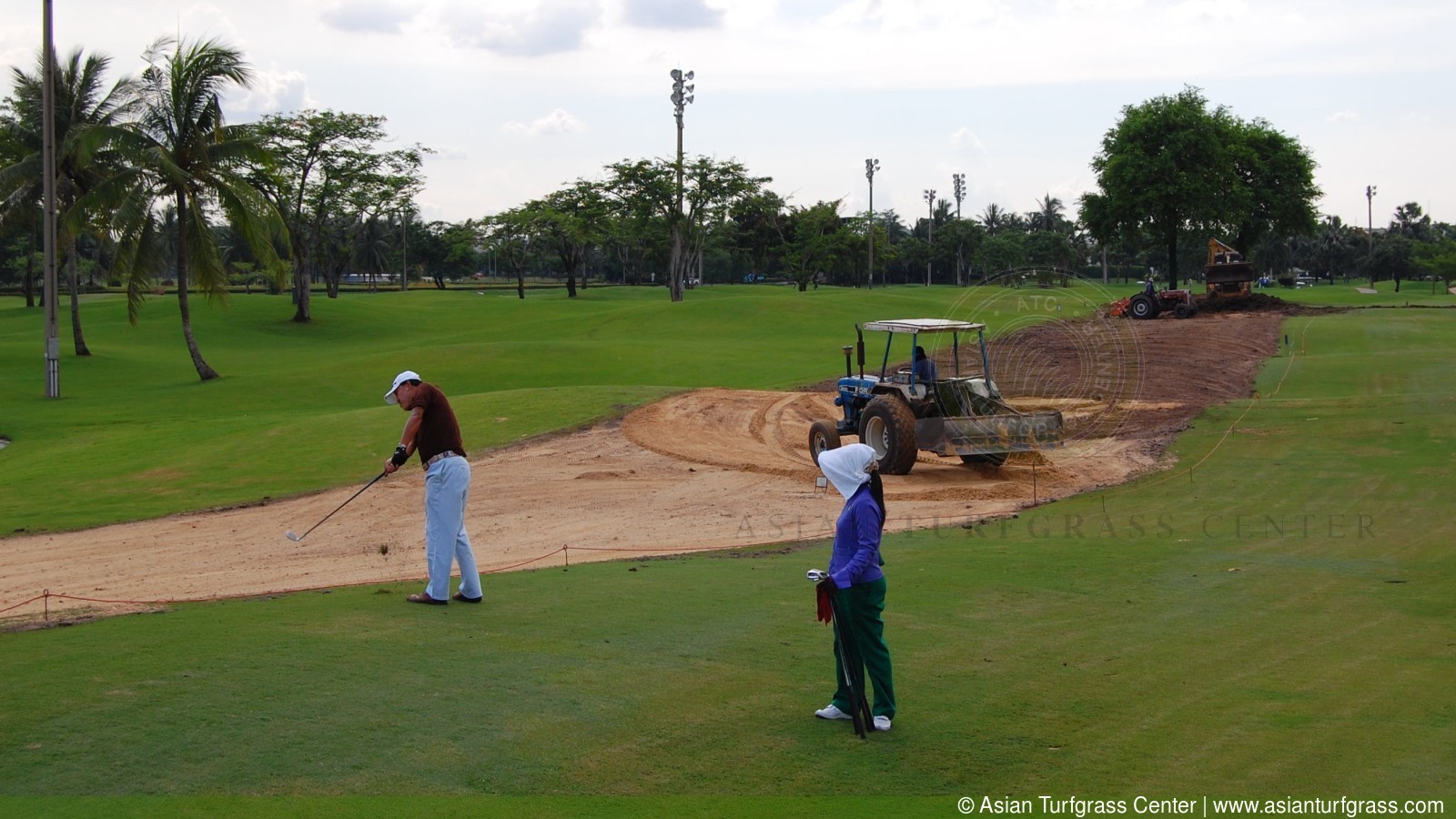 The course, and the hole being worked on, remained open while the grass was changed; paspalum will be planted on the right side and is now ground under repair; the bermudagrass on the left side remains open
The course, and the hole being worked on, remained open while the grass was changed; paspalum will be planted on the right side and is now ground under repair; the bermudagrass on the left side remains open
After the seashore paspalum was established, play was moved to that side of the fairway, and the remaining bermudagrass was replaced with paspalum.
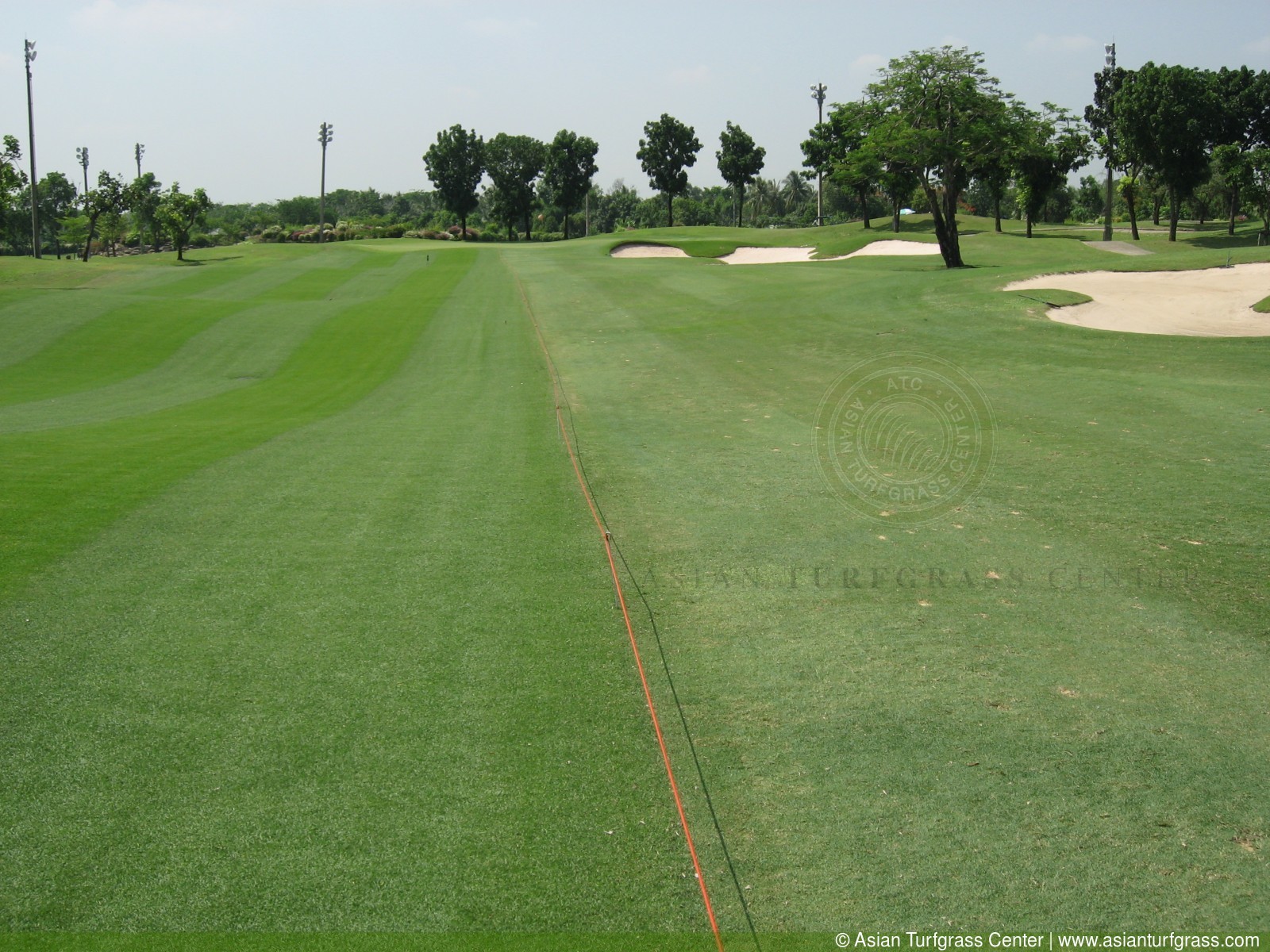 Paspalum at left is ground under repair; the bermudagrass at right remains in play
Paspalum at left is ground under repair; the bermudagrass at right remains in play
A similar approach was taken when Alpine GC in Bangkok converted fairways from bermudagrass to seashore paspalum.
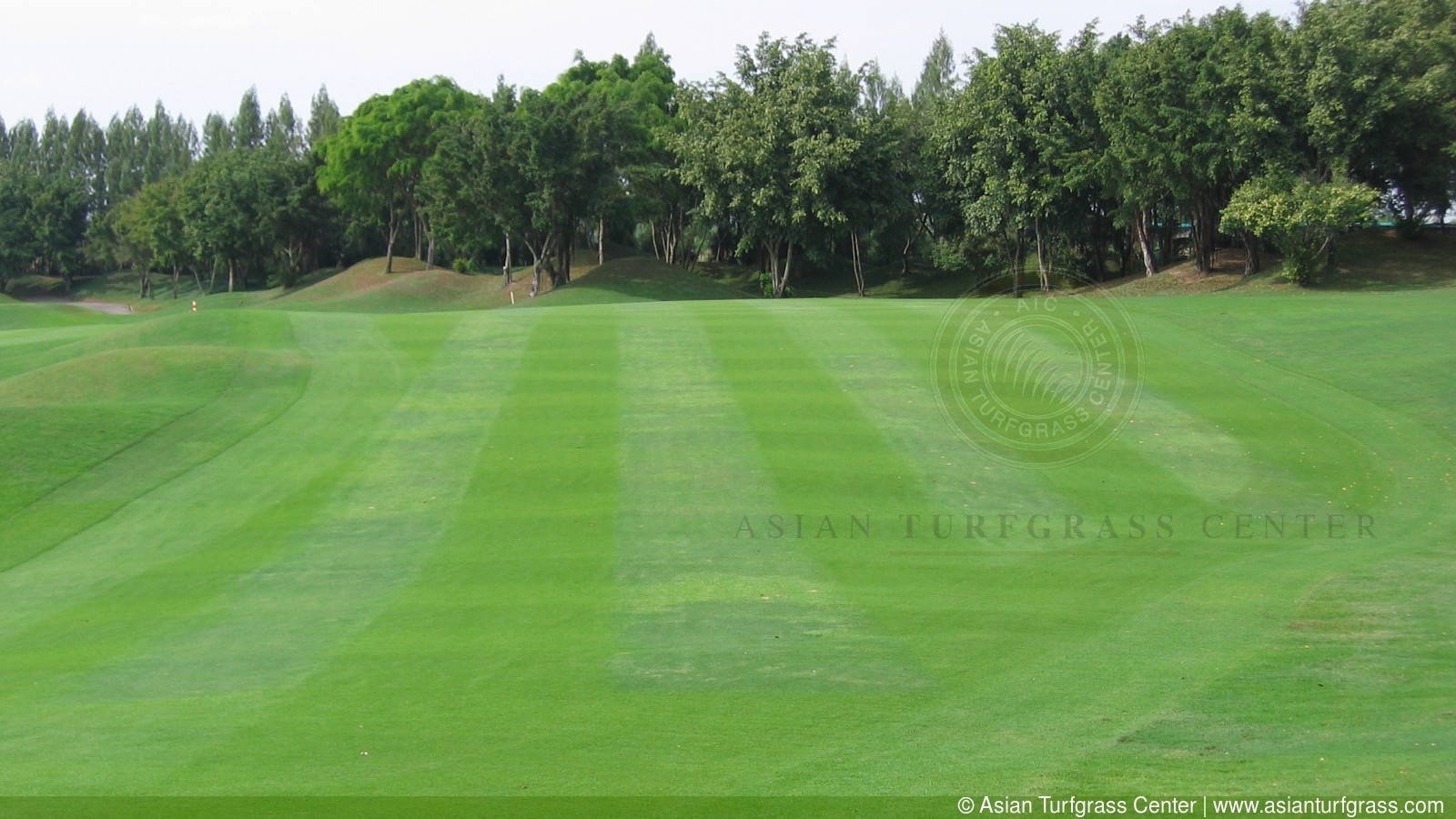 Fairway conversion from bermudagrass to seashore paspalum by first replacing half the fairway with paspalum sod in a pattern resembling mowing stripes; half the fairway remained in play while half was ground under repair
Fairway conversion from bermudagrass to seashore paspalum by first replacing half the fairway with paspalum sod in a pattern resembling mowing stripes; half the fairway remained in play while half was ground under repair
These techniques sometimes used in Thailand (and I presume around the world) remind me of the two green system in Japan.
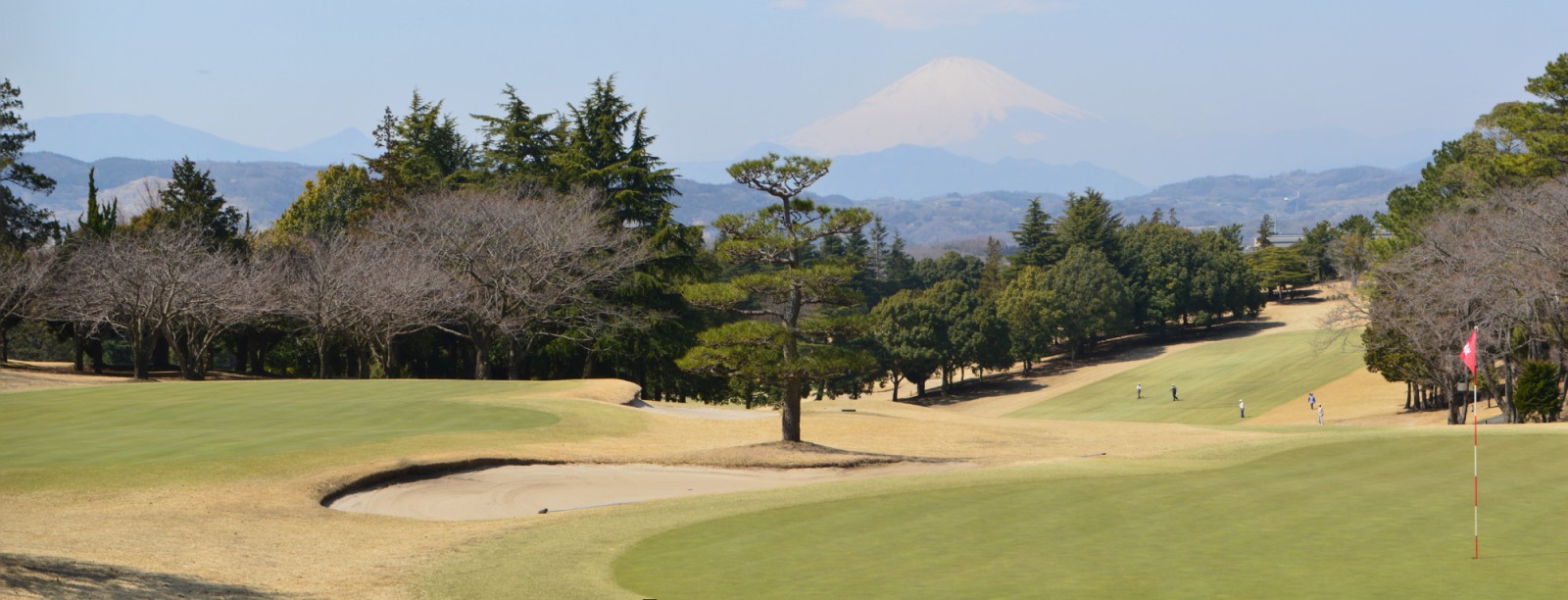 Two bentgrass greens on one hole in Kanagawa, Japan
Two bentgrass greens on one hole in Kanagawa, Japan
With the two green system—let’s call them the “main green” and the “sub green”—one can work on the sub green while keeping the main green in top condition. Play is of course to the main green. Then when it comes time to do work on the main green, one can prepare the sub green to be in top condition. Play is then moved to the sub green, and disruptive work is done to the main green.
I’ve written more about that system.
Now that my memory takes me to Japan, I’m reminded of the time I was a greenkeeper in Japan. We overseeded Tifway bermudagrass fairways with perennial ryegrass. Here’s how we did it:
First we verticut, swept, mowed, swept, brushed, mowed, and swept the fairways to prepare them for seeding. Then we spread the seed. And we did all this without closing the course for a single day.
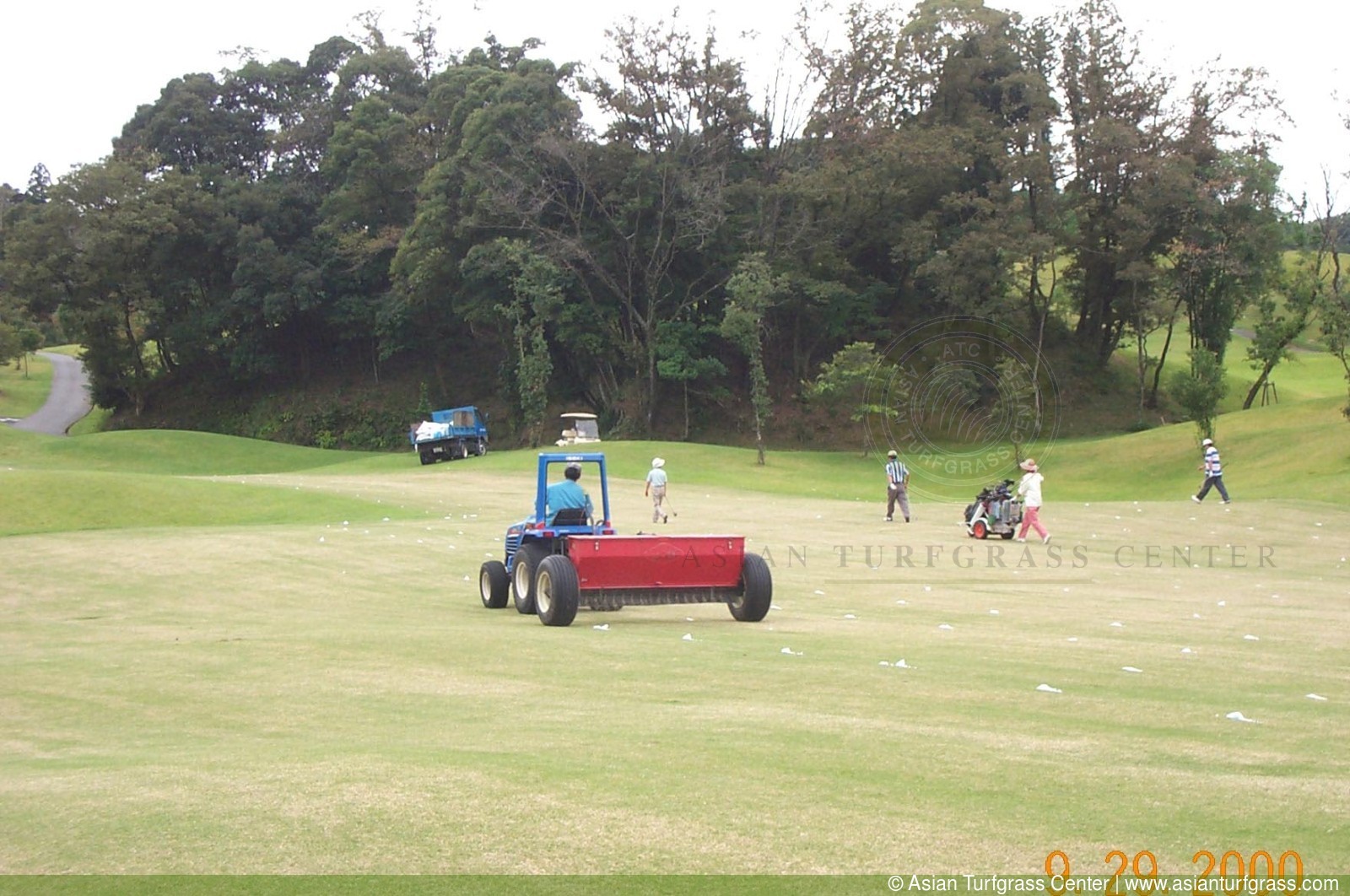 Dropping perennial ryegrass seed on the 14th fairway at Habu CC during overseeding in September 2000
Dropping perennial ryegrass seed on the 14th fairway at Habu CC during overseeding in September 2000
I wrote more about that process in these posts.
It worked out well. The members and visitors were happy to play the course during overseeding. And they were especially happy to play once the overseed was established.
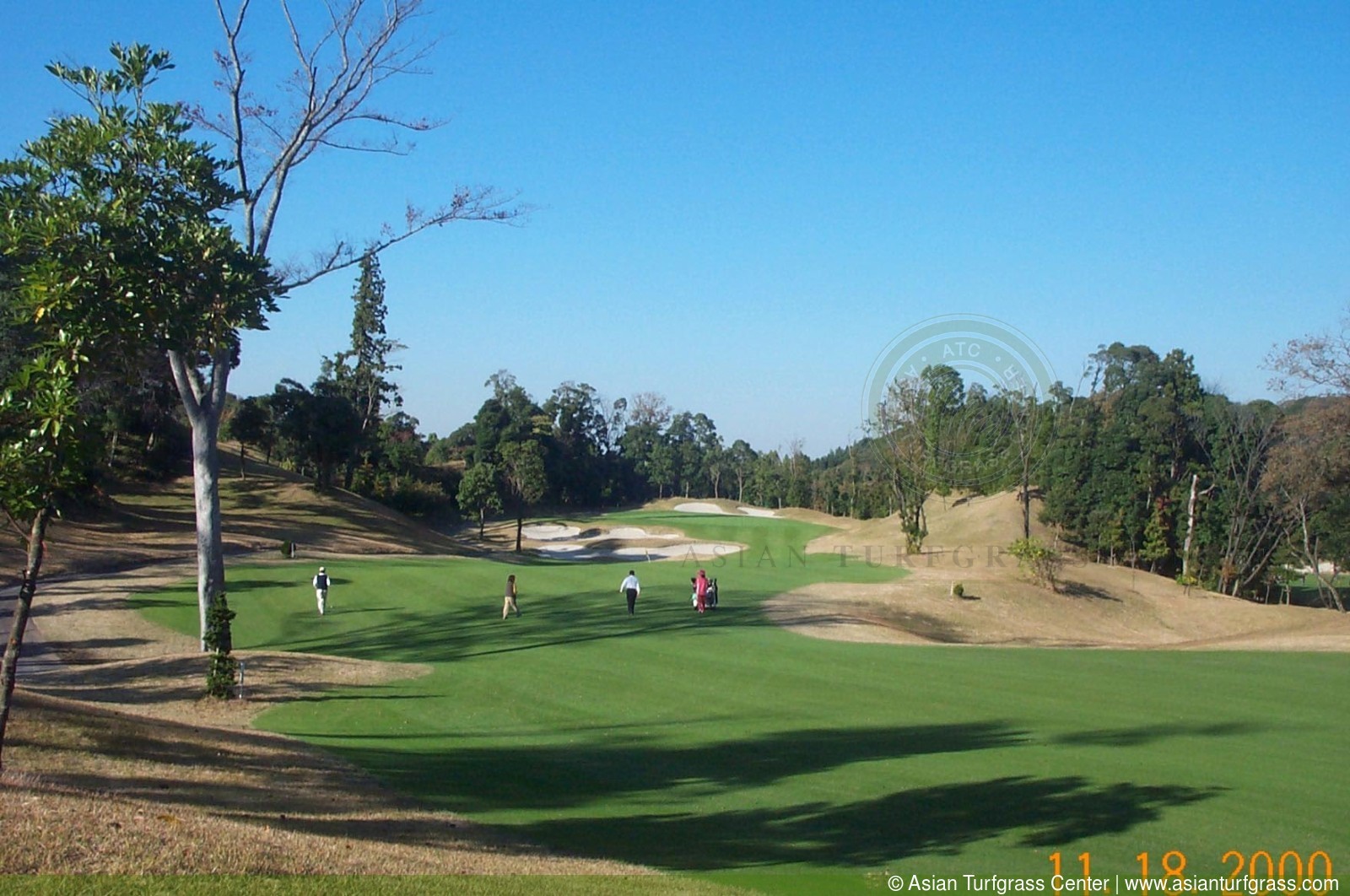 Perennial ryegrass overseed on the 15th fairway at Habu CC
Perennial ryegrass overseed on the 15th fairway at Habu CC
Keeping the golf course open for customers who want to play golf is a standard practice in Asia.
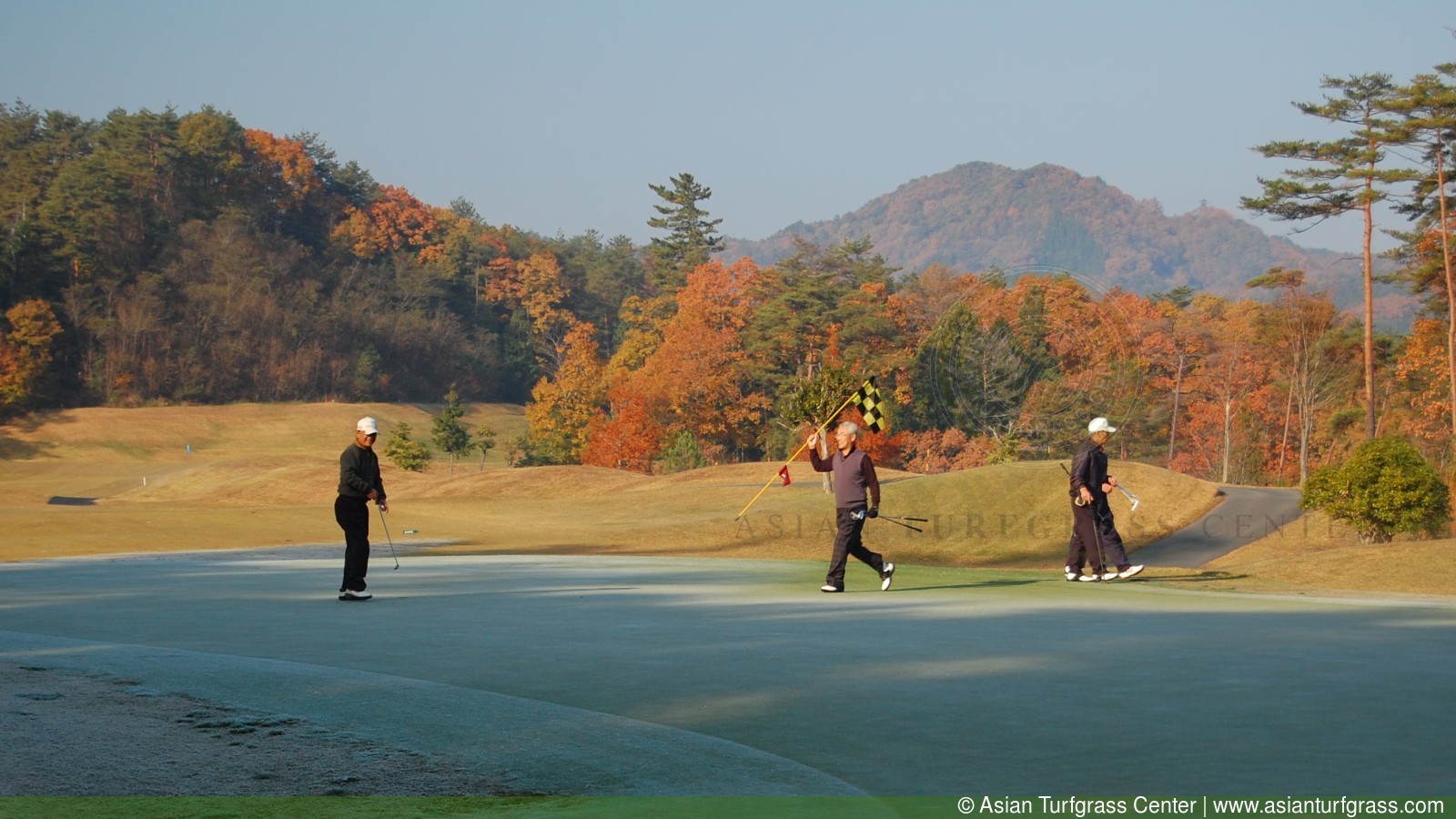 Golf on an L-93 creeping bentgrass green on a frosty morning in Shimane prefecture, Japan
Golf on an L-93 creeping bentgrass green on a frosty morning in Shimane prefecture, Japan
I’ve written about my experience with frost delays, and the damage caused, a few times.
- How to lose 120 million yen with frost delays
- Playing golf in ice and snow
- Fall potassium and winter traffic on a bentgrass green
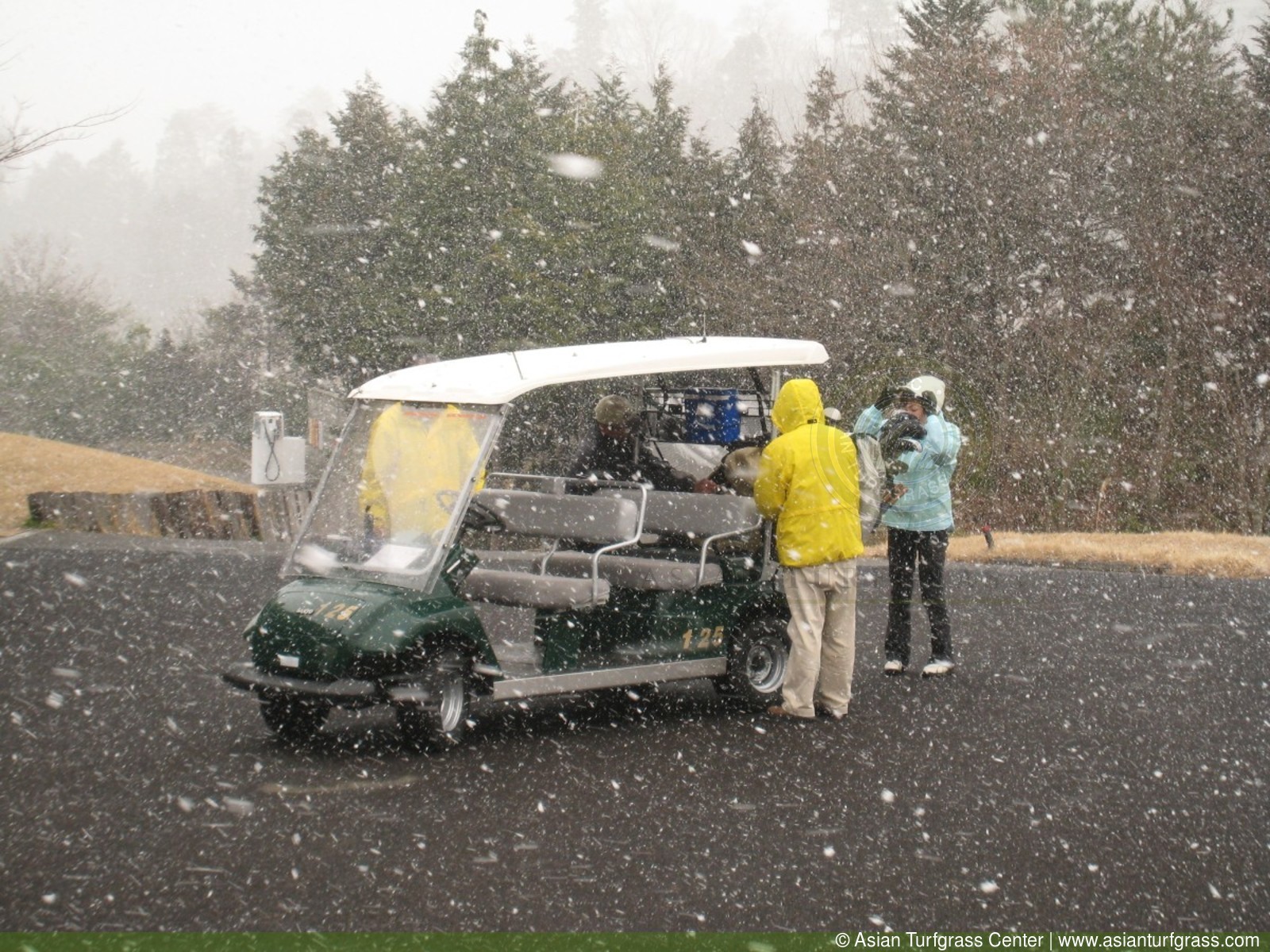 Golf during a snow squall in the Chubu region of Japan
Golf during a snow squall in the Chubu region of Japan
When a golf course is selling a product—a round of golf—and customers want to purchase that product, and their purchase and use of that product doesn’t cause irreperable harm to the golf course … well, what should you do? There are a lot of ways to produce the desired conditions.